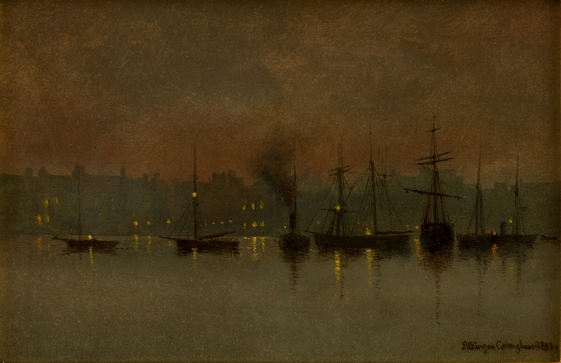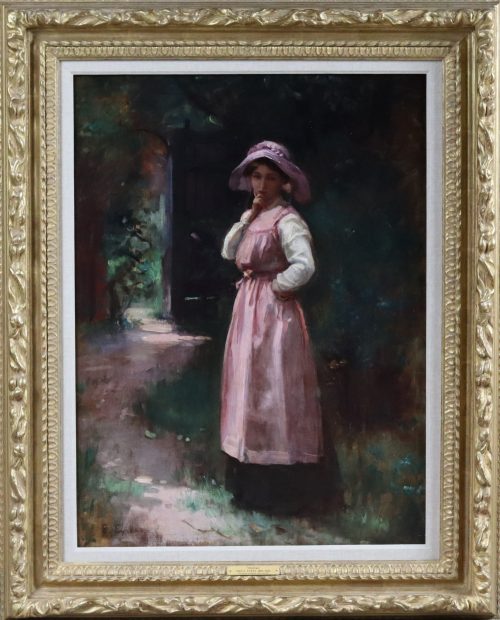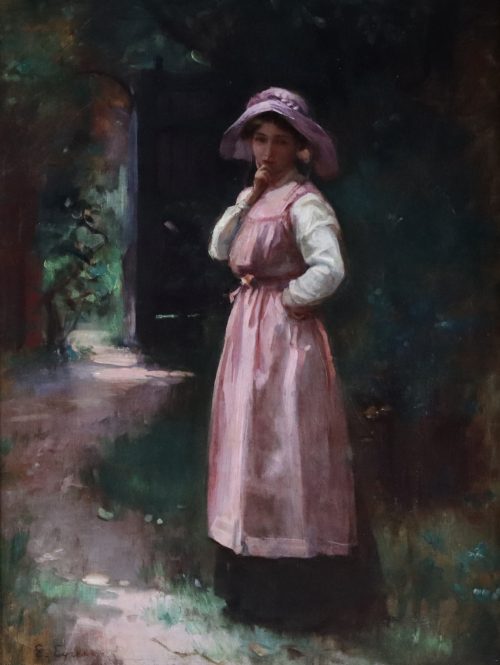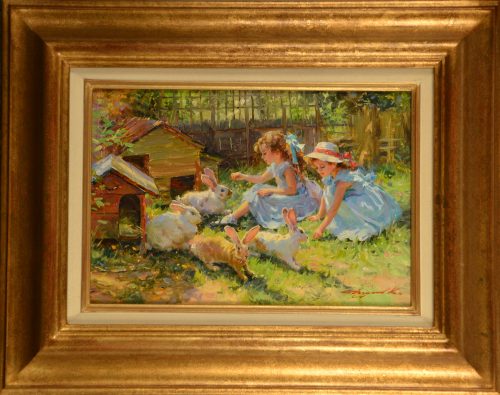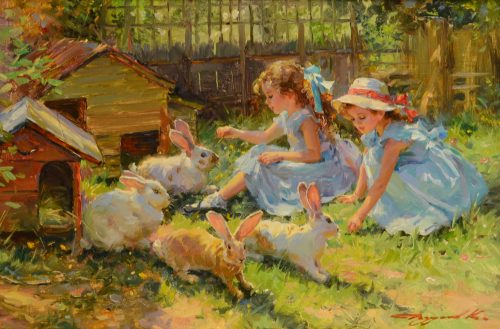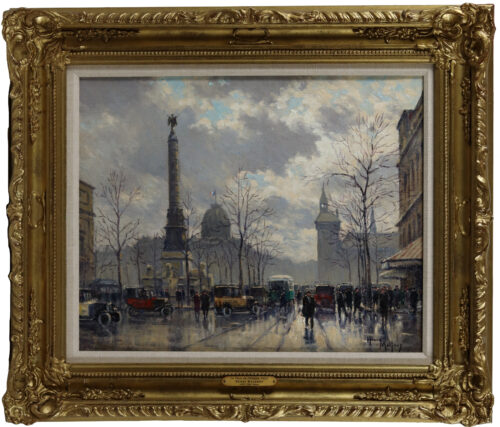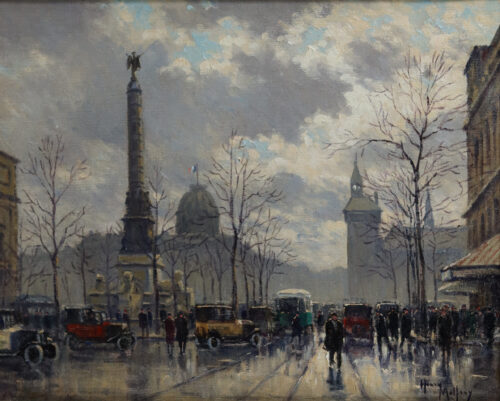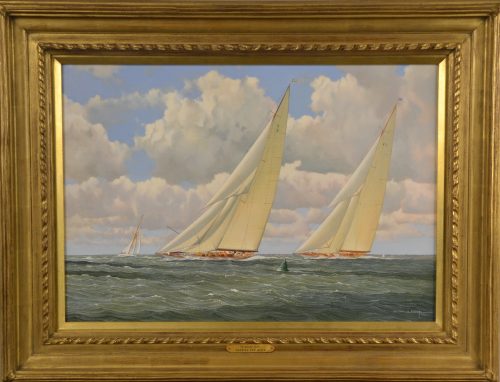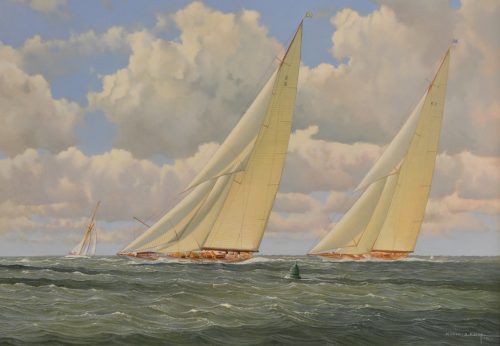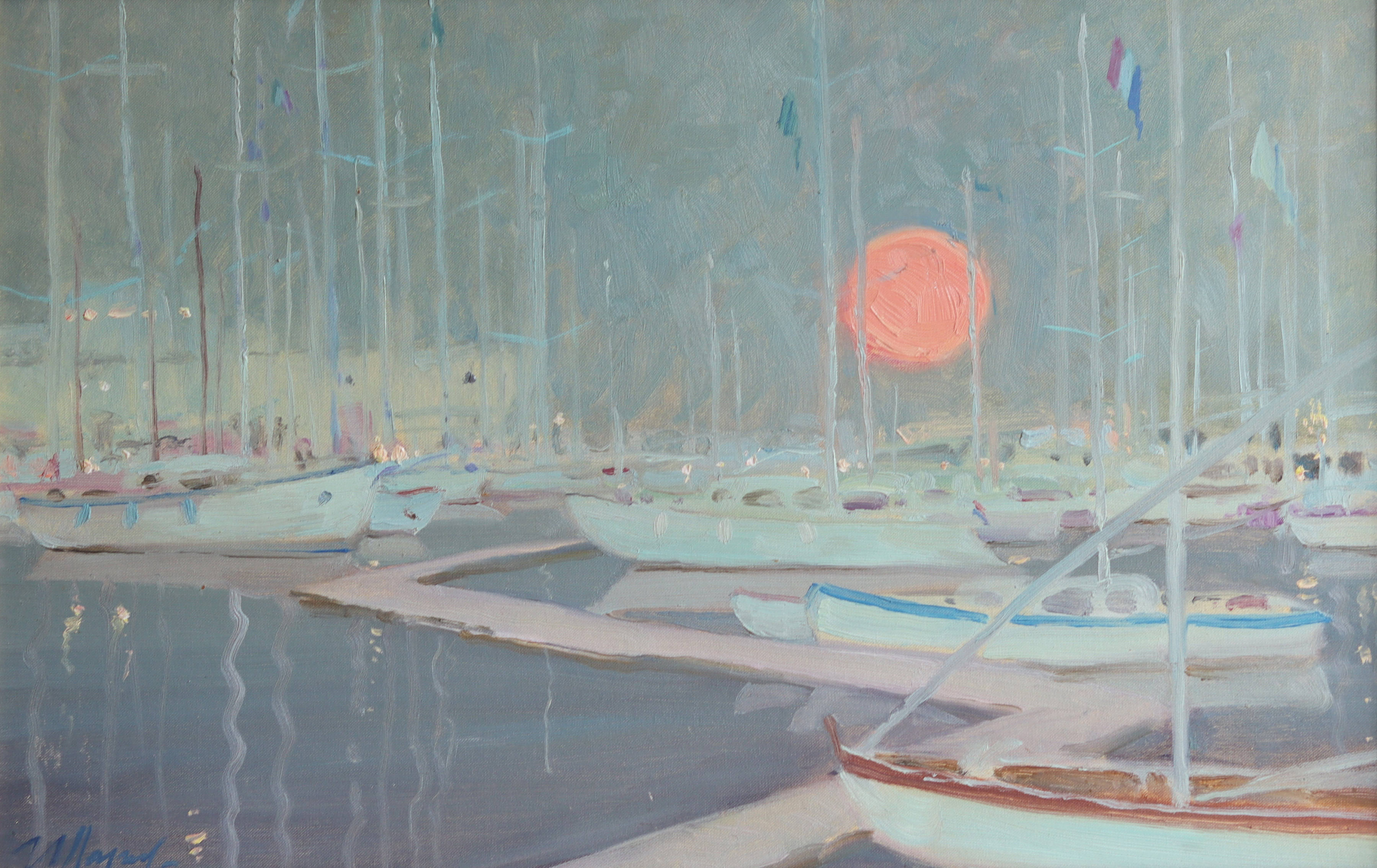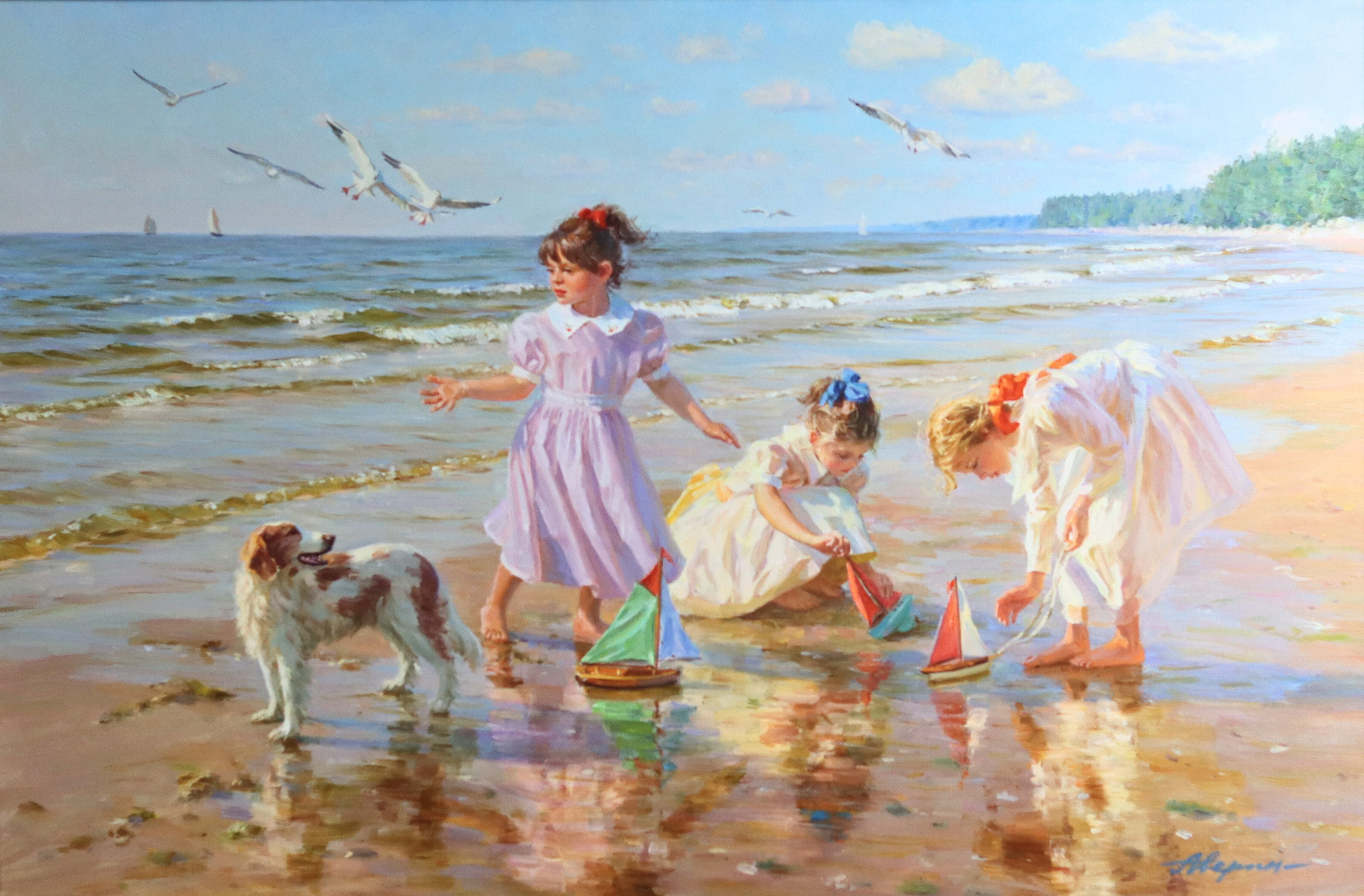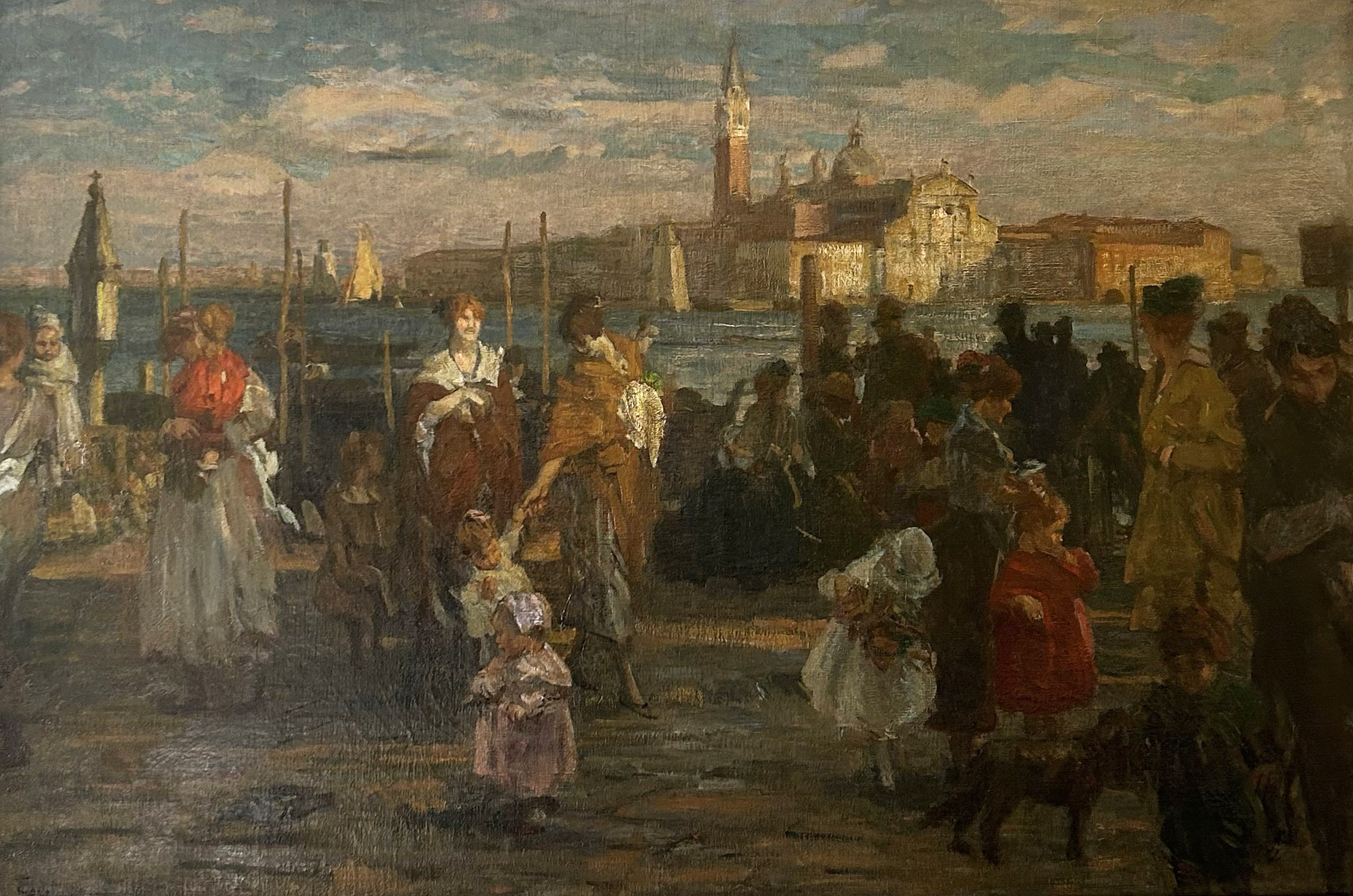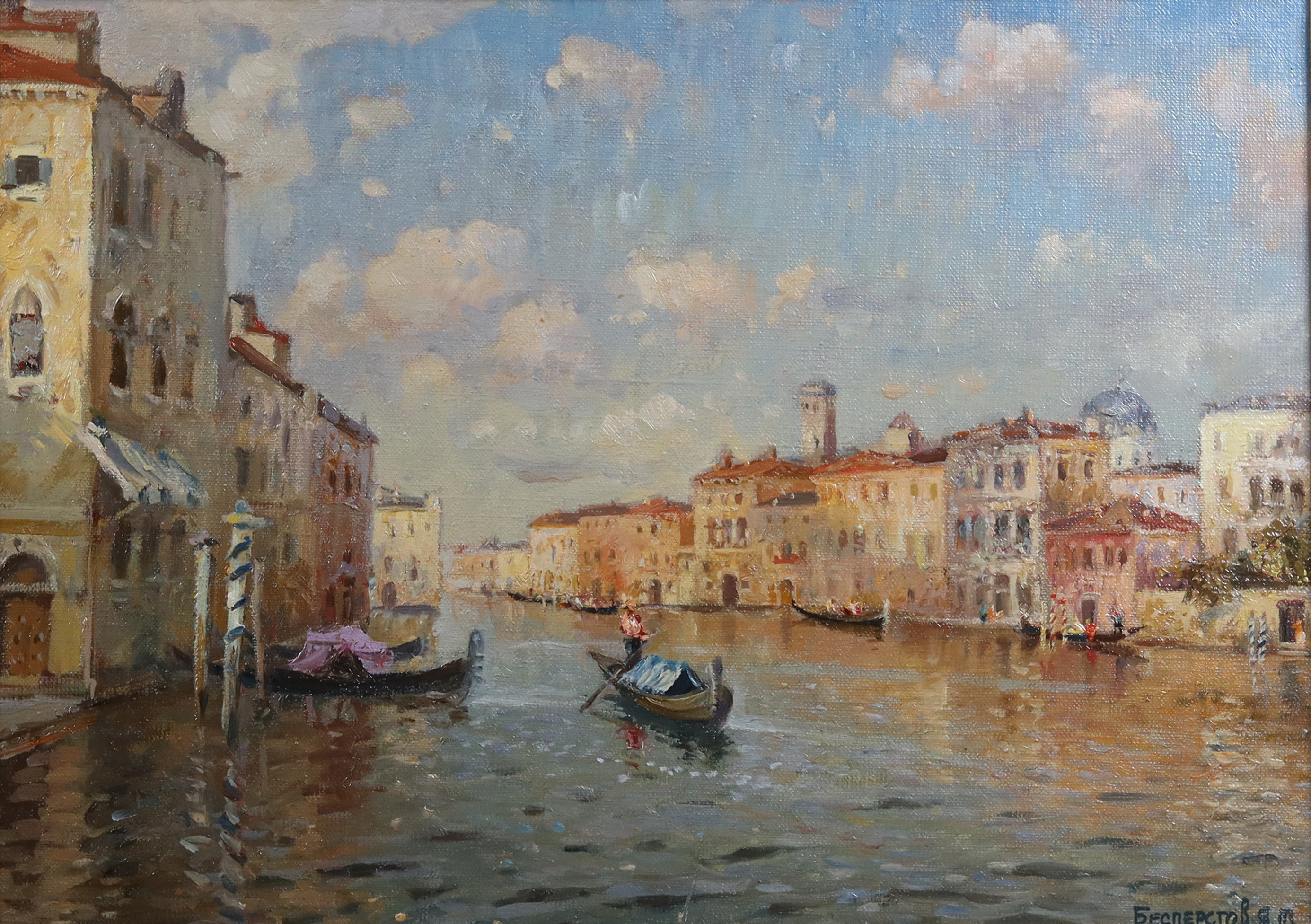Sunday Night Knostrop Cut, Leeds ~ John Atkinson Grimshaw
Out of stock
Sunday Night Knostrop Cut, Leeds ~ John Atkinson Grimshaw
Description
| Title: | Sunday Night Knostrop Cut, Leeds |
| Size: | Signed & dated 1893 |
| Price: | £20,000 – £50,000 |
| Location: | Please Refer |
Share:
Grimshaw was a Victorian artist who became famous for his atmospheric views of dockyards and nocturnal scenes of urban lanes with leafless trees silhouetted against moonlit skies. He was born in Leeds, son of an ex-policeman. Grimshaw was employed as a clerk for the Great Northern Railway, and it was at this time he first began to paint. In 1858 he married his cousin Frances Theodosia Hubbarde and by 1861 left his job in order to devote all his time to painting. His early work was influenced by Ruskin and the Leeds painter John William Inchbold, who worked in a detailed Pre-Raphaelite style. About 1865 he adopted a more muted palette and atmospheric style; he painted many urban scenes in which moonlight and shadows were the most striking features. By 1870 Grimshaw had become successful enough to rent Knostrop Old Hall, a 17th Century mansion about two miles from the centre of Leeds, and near Temple Newsom which features in many of his pictures. Grimshaw painted mostly for private patrons and only exhibited five works at the Royal Academy from 1874 – 6 and one at Grosvenor Gallery. The towns and docks he most frequently painted were Glasgow, Liverpool, Leeds, Scarborough, Whitby, and London. He also painted landscapes, portraits, interiors, fairy pictures and neo-classical subjects. Grimshaw usually signed his pictures on the front and the reverse, inscribed with the title. In the 1870’s he built another home near Scarborough which he called, ‘The Castle by the Sea’, but after suffering a serious financial disaster in 1879 it had to be sold. He moved to London and rented a studio in Chelsea, leaving his family at Knostrop, but did return, and died there in 1893. Two of his sons, Arthur and Louis also became painters.

